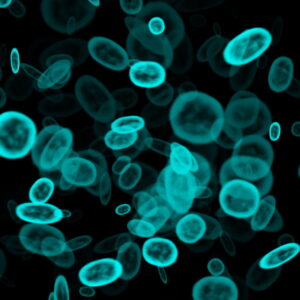 There are several different types of indoor air quality solutions for homes, but the two most common are air filters and air purifiers. Air filters are effective at stopping larger particles moving through the HVAC system, such as dust, lint, and dander. Higher-strength filters can trap even smaller particles, but the stronger the filter, the more resistance it places against airflow. Most residential HVAC systems can’t tolerate filters this powerful, and this is where air purifiers are especially beneficial.
There are several different types of indoor air quality solutions for homes, but the two most common are air filters and air purifiers. Air filters are effective at stopping larger particles moving through the HVAC system, such as dust, lint, and dander. Higher-strength filters can trap even smaller particles, but the stronger the filter, the more resistance it places against airflow. Most residential HVAC systems can’t tolerate filters this powerful, and this is where air purifiers are especially beneficial.
Air purifiers don’t trap airborne contaminants in a mesh, but instead, create ionization fields or use UV lights to remove them. They can trap many of the pollutants that will slip through air filters, which is why we often recommend a combination of air filters with an air purifier in Cincinnati, OH for our clients.
If you’re curious about how effective an air purifier can be, below we’ll look at the kinds of pollutants it can mitigate in your home. This isn’t an exhaustive list, and not all air purifiers affect the same range of pollutants—please always rely on professionals when it comes to selecting and installing air purifiers.
Ionization Air Purifiers
These air purifiers use electric voltage to charge the air particles moving through the ventilation system. Unwanted particles develop either a negative or positive charge, and the purifier then pulls these charged particles down to a set of plates to trap them.
These types of air purifiers can affect a wide range of contaminants:
- Odor molecules. In particular, air purifiers are excellent at getting rid of the odors associated with cooking, but they also affect odors from smoke and combustion products.
- Allergens from pets. Although air filters can trap pet hair, pet dander from cats, dogs, and birds will often get through the fibers. Air purifiers can remove them.
- Seasonal allergens. Spring can be a rough time for people who suffer from seasonal allergies, and air purifiers are a good defense against the sources of hay fever, such as pollen and ragweed.
- Asthma triggers. Air purifiers are also helpful for homes with people who suffer from asthma.
- Volatile organic compounds (VOCs). This is a large category of pollutants that are unfortunately extremely common in homes. VOCs come from cosmetics, cleaning products, hobby products, varnish, paint, pressed wood, furniture upholstery, and more. They can create many short and long-term health problems.
- Asbestos and radon. However, if your home has serious issues with either, you’ll want to take more extensive steps to eliminate them.
UV Air Purifiers
These air purifiers use ultraviolet lights to disrupt the cellular structure of organic pollutants without creating harmful byproducts. The contaminants UV air purifiers remove include:
- Mold and mold spores.
- Bacteria.
- Germs and viruses.
- Microbes.
Not only are these particles harmful to the health of people in your household, they’re also a source of foul odors, and mold growth can negatively affect the air conditioning system.
Our experts can help you figure out what type of air purifiers and air filters are best for your home. We’ll see you have the healthiest air possible.
Call Bartels Heating & Cooling “For a Comfortable Way of Life”!
